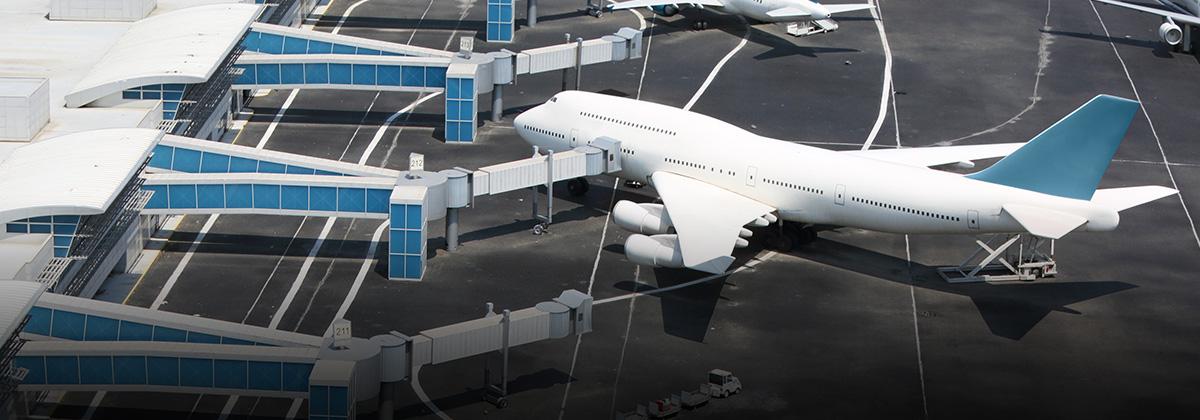For the aerospace and defence sectors, the diverse nature of indirect procurement spending means that significant savings can be made through having the right MRO strategy
The UK’s aerospace and defence sector is world-renowned for the quality of its engineering and the final product. The two sectors, along with Security and Space have generated turnover of £79bn in 2019.
However, there has been, and continues to be, a number of pressures on the industry given the COVID-19 pandemic, plus the ramifications of the UK's decision to leave the European Union.
As such, it’s never been more important to look at making efficiency savings on soft costs such as MRO (maintenance, repairs and operations) procurement. Not only can a strong MRO strategy help improve the bottom line; it can also improve the effectiveness of operations in this highly innovative industry.
"If a company is develoing a prototype, it's important to have access to the key parts and components quickly"Greg Sharp, Industry Sector Manager, RS
The value of an MRO strategy
The first step to putting the right MRO process in place, according to Helen Alder, Head of Knowledge and Product Development at the Chartered Institute of Procurement and Supply, is to understand the value of getting it right. “Organisations don’t always understand what MRO is in the first place, and therefore they do not see the need to have a strategy to deal with MRO,” she explains. “There are a number of reasons why you should have an MRO strategy, but probably the most significant is that among the products you purchase will be items that would cause your operations to grind to a halt if they went wrong and you can’t replace them quickly.”
“Ultimately, the most important thing is to keep your business running so that you don’t have downtime that incurs costs and affects profitability,” Alder adds. “The answer is to have a very reliable set of approved suppliers that you can trust to have the products you need in stock. Part of the process is working with suppliers to identify which key products are essential for keeping your business running, and then making sure that this core list is stocked at all times.”
MRO purchases play a particularly important role in the R&D stage of the production cycle. “If a company is developing a prototype, it’s important to have access to the key parts and components quickly,” says Greg Sharp, Industry Sector Manager, RS. “Timeliness is important, so having to wait several days for the right part will be costly.”
It’s this potential cost in delaying a project that Alder believes manufacturers should focus on first and foremost. “With this sort of key component, price is not always the main factor,” she explains. “The importance of being able to get stock and have it delivered quickly makes it worth potentially paying a higher list price, because any delays in getting a critical part would cost the business much more in the long term.”
By its nature, MRO purchases tend to cover a highly diverse range of products, so it’s vital that aerospace and defence companies have the right suppliers in place. “You need a supplier with expertise in the industry,” says Sharp. “Someone who can bring specialist vendors to the table if needed, but have the capacity to deliver parts quickly, sometimes to remote locations (which are often used for testing).”
"There could potentially be very serious consequences if the wrong parts found their way into an aircraft through maverick spending"Helen Alder, Head of Knowledge, Chartered Institute of Procurement & Supply
“Maverick” spend
The next issue to resolve is around who orders these parts, and how. “There is a constant battle around what is right for the engineer” says Sharp. “Engineers often have their own priorities and don’t look at the big picture in terms of overall spending and efficiency for the company.”
The result is the potential for individuals to source parts for themselves from a variety of sources. “There is a massive risk of ‘maverick’ spend,” says Alder. “If engineers are buying parts from non-approved suppliers it may cost more and possibly take longer to source, but the biggest issue is the quality of the parts.
“It’s not unknown for engineers to search the internet and buy parts that turn out to be counterfeit or that don’t meet the required quality levels,” she adds. “The idea of this happening in the aerospace industry is frightening, and clearly could potentially have very serious consequences if the wrong parts found their way into an aircraft.”
By consolidating suppliers for MRO purchases down to a small, approved group, it’s possible to monitor spending, streamline the ordering process and, most importantly, to ensure that all products meet the standards required.
Ideally, suppliers should be chosen that could integrate into your business’s computer systems. “At RS we offer a punch-out eProcurement system where end users can order direct from an electronic RS catalogue on their system,” says Sharp. “They can search for what they want and when they order it just shoots it back into their system. This makes the process simple and timely for engineers, but also allows procurement to keep an eye on spending and consumption patterns.”





